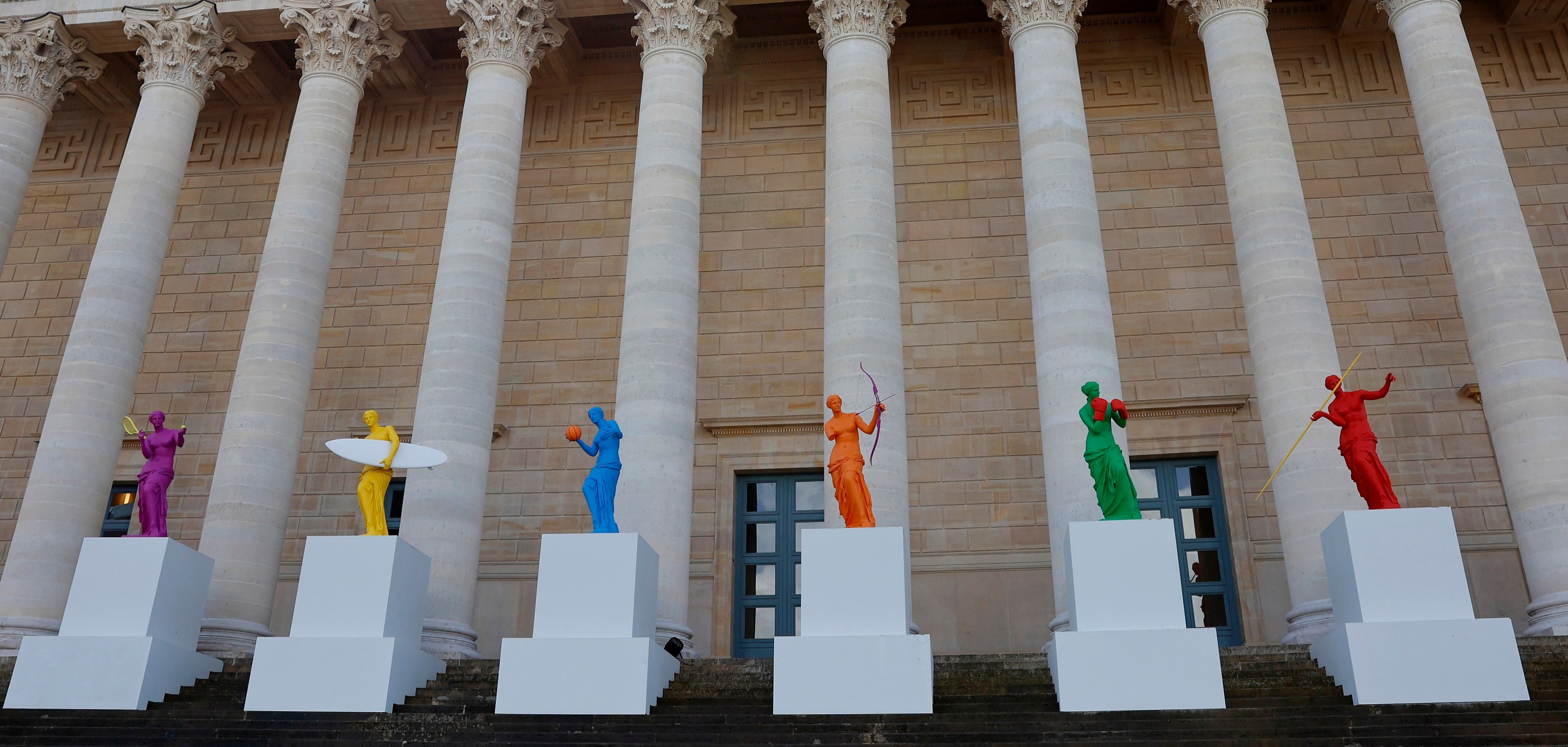The International Surfing Association (ISA) is no stranger to international sports bureaucracy. Having secured surfing’s inclusion in the 2020 Tokyo Olympic games after more than a quarter-century of lobbying and negotiation, the association is familiar with the levers that must be pulled and the hands that must be shaken to get things done. But getting para surfing on the world’s biggest athletic stage has proven even more difficult than expected. Although the International Paralympic Committee (IPC) announced in June 2023 that para surfing would be shortlisted for inclusion in the Paralympic Games, it’s been in a holding pattern ever since.
“We've been trying hard and pushing, I guess really since the beginning, for all of our members—we have 116 member federations,” said Alex Reynolds, the ISA’s director of membership and development. Reynolds says that the association has set its sights on L.A. 2028. This may be optimistic. The Paralympics have historically taken longer to expand their program of sports than their non-disabled IOC counterparts. The last parasports added to the program were badminton and taekwondo in Tokyo; that same year, five sports were added to the Olympic program. Three new Olympic sports will debut in Paris this summer, and no new Paralympic sports.
Broadly speaking, this can be boiled down to three (public-facing) reasons: The IPC wants to see gender parity, it wants to see athletes from a variety of classifications—IPC-speak for a variety of disabilities—and it wants to see the number of athletes playing the sport on the rise.
But Paralympic funding is a chicken-and-egg situation: For the sport to keep growing, it needs money. And a lot of the funding for parasports at all levels, from recreation up through the elite ranks, tends to rely on a country’s Paralympic committee. No spot on the Paralympic program? Almost no money to play with.
Dr. Andrea Bundon, a researcher at the University of British Columbia who focuses on the sociology of sport with a significant focus on parasport, says that the IPC’s philosophy makes it exceptionally difficult to break the cycle and gain inclusion.
“The IPC will say, ‘Our responsibility is to the Paralympic program and that international-level competition,’” Bundon said. “But when they cut sailing, all sorts of sailing programs across Canada lost their funding. And how does that happen? It’s because once there's no longer a national team, there's no longer a budget for a development team. Once there's no longer a budget for a development team, that coach who is maybe working part-time as a development coach, but also running a club program [is affected]. It trickles down.”
It’s something Kevin Orr, an American Paralympian in wheelchair track and a coach for Canada, the U.S., and Japan in wheelchair rugby, has experienced firsthand. “When I was the head coach of Canada and Japan, I tried to do as much development as possible,” Orr said. “But you're getting paid for your podium performance, not for building the depth of the sport. And I think you have to have depth.”
The ISA held its first world championships in 2015 and has been steadily growing the sport since. After applying for inclusion, and becoming an IPC-recognized international federation, there’s not much else to do but wait. Reynolds says they haven’t been surprised by the slow pace of the process.
“There's a long process for lobbying,” he said. “And obviously, you want it to happen sooner. And I think [it’s about] just understanding that there's a lot of complexities and things that go into making those decisions.”
Reynolds says that the ISA has had to fund para surfing through other avenues, such as sponsorships and grants, because the IPC doesn’t provide development funding.
“We’ve experienced the same thing with [Olympic] surfing,” he said. “You have to get in and then you have more support. And it's also a challenge, in some ways, with the national federations because for them to receive funding from their national Paralympic committees, some of them want to see that your sport is on the Paralympic program.”
Then there’s the challenge of classification. In the parasport dictionary, being “classifiable” means being eligible. Different sports handle this in different ways. For individual sports, the general idea is that you’re sorted into a classification that puts direct competitors on as equal a footing as possible. This is how you end up with 14 classifications in swimming and 39 in track and field. In team sports there are generally two approaches: a binary in-or-out system—para hockey is one of these—or the more common choice of classifying athletes according to their function, assigning them a point value or a class, and then limiting the number of points that can be on the floor at one time. Complicated? Just wait until you hear about the scandals, and there are scandals.
Paralympic athletes have been hit with boosting allegations, in which athletes with spinal injuries intentionally cut themselves to trigger a reflex that gives them a competitive advantage. Para swimmers have been accused of tanking races to earn a more favorable classification. Every sport constantly has rumors swirling about doping. Classification and fairness in parasport are tricky balancing acts at the best of times.
Reynolds says that he and his team recognize that classification, despite being based on the medical model of disability, is far from a perfect science. The ISA’s approach has been to consult with athletes on everything from classifications to equipment regulations, with an eye toward bringing as many people to the table as possible.
“I think classifications in all parasports is the most complex,” Reynolds said. “I don't think there's any way to perfectly nail that. Even parasports that have been around for a long time have challenges with classification.”
That includes wheelchair basketball, one of the oldest parasports. The International Wheelchair Basketball Federation (IWBF) got into what can only be described as a pissing contest with the IPC over the parent organization's new 2015 classification code, a ruling that barred some athletes from a sport in which, in some cases, they had been competing for 20 years. In 2021 the IWBF was designated non-compliant and provisionally banned from the Paris Paralympics.
The IWBF eventually complied—money and prestige talk—but some in the sport find it problematic that the trend seems to be toward limiting who can play rather than pitching a bigger tent. Orr says that he saw the reduction of sports classes in track and field heavily impact those in what are colloquially known as the quad divisions (with multiple paralyzed limbs) in the early 2000s.
“It's funny. On one side of the model, the IPC says we want to serve more severely disabled people,” Orr said. “and [then] the quad divisions are some of the things that [they are] dropping?”
Because of this, among a host of factors, some parasports are seeing a reduction in athletes. The wheelchair basketball and wheelchair rugby competitions have faced a decrease in automatic Paralympic spots, opting instead for last-chance qualifiers that have featured some of the historic titans. And, predictably, funding has flowed away from team sports, with organizations like the British Paralympic Association openly announcing that individual athletes will be prioritized.
If all this weren’t enough, there’s also the challenge of growing women’s parasports. Reynolds says the ISA has made a concerted effort to increase the number of women surfing at the international level.
“We had Alana Nichols, who's a member of our athletes’ commission, and also multi-time Paralympic gold medalist, and a few other women actively pushing each of the countries to bring more females into the sport and kind of push that forward,” he said. “And we've since seen massive growth in the number of women that are participating.”
Reynolds is hopeful that better gender parity will play well when the IPC makes its decision. Still, Bundon says that the perception persists in parasport—as in non-disabled sport—that adding something for women means taking something away from men.
“We've seen that with women trying to get into the Paralympics, that basically, it’s always framed as you're taking a place from the men that are already there,” Bundon said. “You're [forced to] justify adding something to the games that should have been there or could have been there from the start.”
The IPC has yet to announce whether para surfing and para climbing will be included in the 2028 games, and has provided no timeframe for its decision. (Brisbane 2032 is expecting a high number of applications, and thus more competition.) Despite this limbo, Reynolds and the ISA remain cautiously optimistic that para surfers will hit the waves in Los Angeles. After all, there’s plenty of room for new sports there in the other games that summer, right?
“In L.A., they added five new Olympic sports,” he said. “So, hopefully they would consider also adding some sports to the Paralympic program.”







